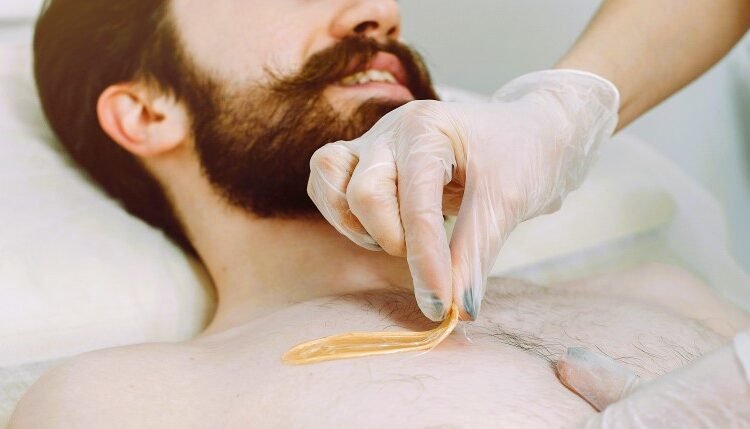
Removing hair around the nipples is a personal preference, and if you choose to do so, it’s important to do it safely to avoid irritation or injury. Here are some methods you can consider:
1. Trimming:
– Use a small, gentle pair of scissors or a trimmer to carefully trim the hair around the nipples. Be cautious not to cut too close to the skin.
2. Shaving:
– Use a clean and sharp razor with a single blade. Apply a gentle shaving cream or gel and shave in the direction of hair growth to avoid irritation. Be very careful and use light pressure.
3. Depilatory Creams:
– Depilatory creams are designed to dissolve hair. Choose a cream specifically designed for sensitive areas. Follow the product instructions carefully and perform a patch test first to check for any adverse reactions.
4. Waxing:
– This method provides longer-lasting results. However, it can be painful and may cause skin irritation, especially around sensitive areas like the nipples. Consider seeking professional waxing services if you’re not experienced.
5. Threading:
– This technique involves using a twisted thread to trap and pull out hairs. It’s precise but can be uncomfortable, especially in sensitive areas.
6. Epilators:
– Electric epilators pull out hairs from the root, providing longer-lasting results compared to shaving. However, it can be painful, especially on sensitive areas.
7. Laser Hair Removal or Electrolysis:
– For a more permanent solution, consider professional treatments like laser hair removal or electrolysis. These methods are performed by trained professionals and can provide long-term results.
Tips:
– Always ensure the area is clean before hair removal to reduce the risk of infection.
– Avoid using harsh chemicals or products that are not designed for sensitive areas.
– If you experience any pain, discomfort, or irritation, stop the process immediately.
There aren’t specific herbal mixtures that are widely recognized for nipple hair removal. It’s crucial to approach hair removal in this sensitive area with caution to avoid irritation or harm. If you’re considering using herbs, consult with a dermatologist or herbalist for personalized advice, as individual skin sensitivities and reactions can vary.
That said, some natural ingredients have traditionally been used for hair removal. Keep in mind that their effectiveness can vary and results may not be as immediate or as thorough as with conventional methods. Here’s an herbal mixture that some individuals have tried for hair removal:
Herbal Hair Removal Paste:
Ingredients:
– Turmeric Powder: Known for its anti-inflammatory and antibacterial properties.
– Papaya Paste: Contains enzymes that can help break down hair follicles.
– Gram Flour (Besan): Acts as an exfoliant and can help weaken hair follicles.
Instructions:
1. Mix equal parts turmeric powder, papaya paste, and gram flour in a bowl.
2. Add a small amount of water to make a thick paste.
3. Apply the mixture to the area with unwanted hair.
4. Allow it to dry for about 15-20 minutes.
5. Gently rub the paste off in the opposite direction of hair growth.
Important Notes:
– Always perform a patch test before applying any mixture to a larger area to check for skin sensitivities or allergies.
– Be cautious of allergic reactions, especially with ingredients like turmeric, which can cause skin staining.
– This mixture may need to be applied regularly over a period of time for noticeable results.
Again, it’s crucial to approach hair removal in sensitive areas like the nipples with care. If you’re uncertain about using herbal mixtures, it’s advisable to consult a dermatologist or professional aesthetician for safe and effective hair removal options.




